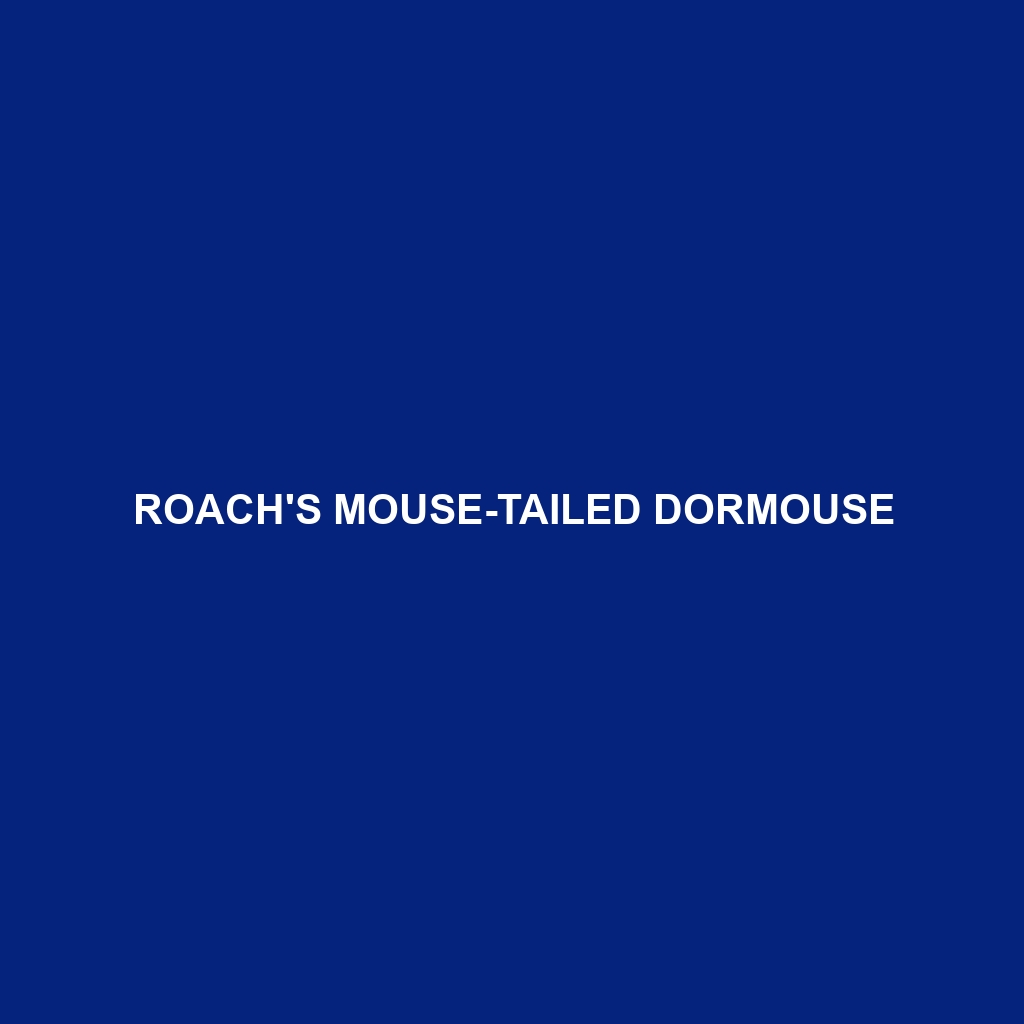Description of Roach’s Mouse-tailed Dormouse
Common Name: Roach’s Mouse-tailed Dormouse
Scientific Name:
Habitat
The Roach’s Mouse-tailed Dormouse primarily resides in the temperate forests and shrublands of southeastern Europe, particularly in regions of Mediterranean climates. This species is often found in areas with dense underbrush and abundant vegetation, which provide necessary cover and food sources. The ideal habitat includes moist woodlands and low scrub, making it vital for their survival.
Physical Characteristics
Typically, the Roach’s Mouse-tailed Dormouse measures around 8 to 10 cm in length, excluding its long, furry tail that can be as long as its body. It has a striking brownish-grey fur that aids in camouflage among its habitat’s foliage. Distinctive features include large, expressive eyes and a rounded body shape, which contribute to its adorable appearance, making it a subject of interest among wildlife enthusiasts.
Behavior
This species is primarily nocturnal, engaging in most of its activities during the night. The Roach’s Mouse-tailed Dormouse is known for its climbing abilities, often seen foraging for food in trees and shrubs. Socially, they tend to be solitary outside of breeding season, and they exhibit a fascinating hibernation behavior during colder months, which allows them to conserve energy and survive in harsh conditions.
Diet
The Roach’s Mouse-tailed Dormouse primarily feeds on a diet consisting of fruits, nuts, seeds, and insects. Its feeding habits adapt according to the seasons; during summer, they prefer fruits and seeds, while in colder months, they may rely on stored food items. Their foraging behavior is crucial for seed dispersal, which contributes to the health of their ecosystem.
Reproduction
Typically, the breeding season for the Roach’s Mouse-tailed Dormouse occurs from late spring to mid-summer. After a gestation period of about 28 to 30 days, females give birth to litters ranging from 2 to 6 offspring. The young are born blind and hairless, relying heavily on maternal care during the initial weeks of life, showcasing notable parental investment.
Conservation Status
Currently, the Roach’s Mouse-tailed Dormouse is classified as vulnerable due to habitat loss and fragmentation stemming from urban development and agricultural expansion. Conservation efforts are critical to ensure the survival of this unique dormouse species, as its population continues to face threats from environmental changes.
Interesting Facts
One of the most interesting facts about the Roach’s Mouse-tailed Dormouse is its ability to enter a deep hibernation state, which can last for several months when faced with cold weather. This adaptation not only protects it from harsh conditions but also significantly lowers its metabolic needs.
Role in Ecosystem
In the ecosystem, the Roach’s Mouse-tailed Dormouse plays a vital role as both a herbivore and prey. By feeding on seeds and fruits, it aids in seed dispersal, promoting plant diversity and growth. Additionally, it serves as an important food source for a variety of predators, including birds of prey and small mammals, maintaining the balance in its habitat.
This HTML-formatted description provides a comprehensive overview of the Roach’s Mouse-tailed Dormouse, using SEO-optimized language while delivering informative content about the species.
